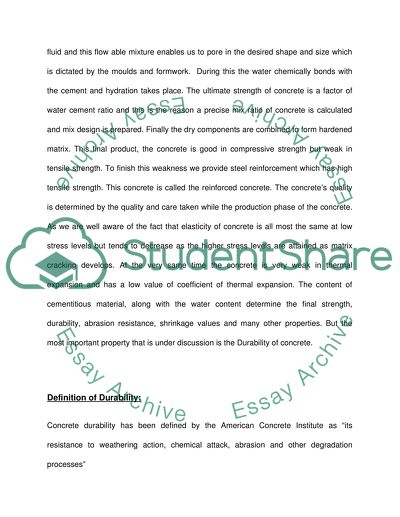Cite this document
(“The durability of concrete Essay Example | Topics and Well Written Essays - 3000 words”, n.d.)
Retrieved from https://studentshare.org/engineering-and-construction/1395385-the-durability-of-concrete
Retrieved from https://studentshare.org/engineering-and-construction/1395385-the-durability-of-concrete
(The Durability of Concrete Essay Example | Topics and Well Written Essays - 3000 Words)
https://studentshare.org/engineering-and-construction/1395385-the-durability-of-concrete.
https://studentshare.org/engineering-and-construction/1395385-the-durability-of-concrete.
“The Durability of Concrete Essay Example | Topics and Well Written Essays - 3000 Words”, n.d. https://studentshare.org/engineering-and-construction/1395385-the-durability-of-concrete.


